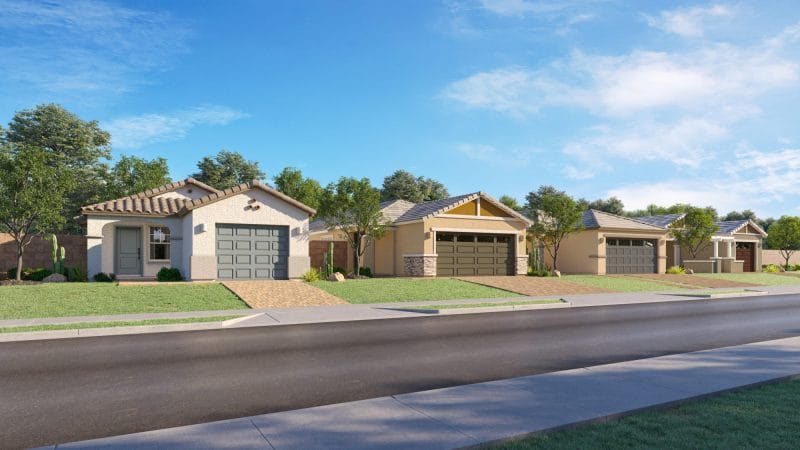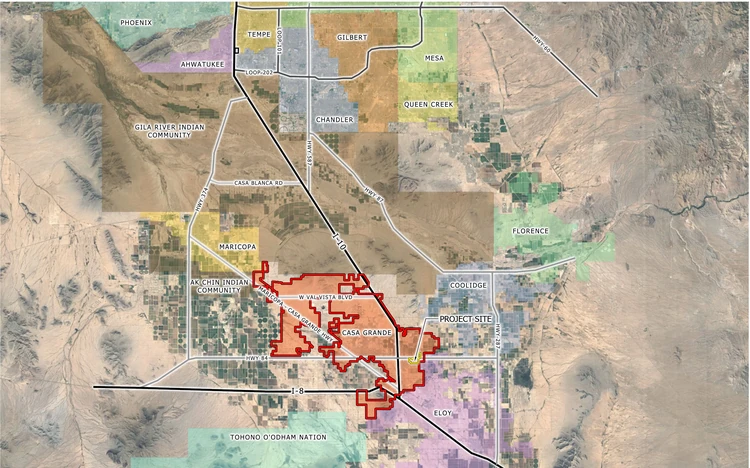
By Brian Wright | Casa Grande Dispatch
CHANDLER –– Pinal County will be an integral part of future growth in Arizona, and addressing transportation issues is perhaps the biggest key to fostering that growth.
Nearly 250 people packed a conference room at the Phoenix Chandler Hilton hotel Nov. 15 to listen to representatives from the Arizona Department of
Transportation, Maricopa Association of Governments and Pinal County. The summit was a joint presentation by Pinal Partnership and East Valley Partnership.
ADOT Director John Halikowski said Arizona needs to capitalize on its location, which has proximity to large economies in California and Texas.
A migration of manufacturing businesses away from California, he said, is something Arizona can take advantage of by targeting investments offering the “highest economic return” and by attracting high-quality jobs with transportation infrastructure.
 Halikowski also said Arizona can attract businesses through other means.
Halikowski also said Arizona can attract businesses through other means.
“There’s also this thing called quality of life, because nobody works 24 hours a day, seven days a week,” he said.
When discussing a North- South corridor study, Halikowski said Pinal County, due to its location in between Maricopa and Pima counties, is set for big changes.
“Pinal County is primed for growth and economic development in the near future,” he said.
Dennis Smith, executive director of MAG, said transportation is an “enabler” for the economy, and jobs are what attract and retain people in a given city or area.
Smith talked about a recent trip he took to Montana and described the state as beautiful. However, he said there’s a reason people aren’t clamoring to move to Montana.
“We don’t live there because there’s no jobs,” he said. “Without jobs, your kids will move to Austin (Texas) and Seattle.”
Greg Stanley, interim county manager for Pinal County, said ADOT and MAG often talk about large-scale projects with price tags in the billions. He joked that Pinal County’s goals are slightly less ambitious.
“I want to talk about millions (instead of billions) and getting rid of dirt roads,” he said.
Pinal County has a five-year transportation plan, and Stanley — who heads up the Development Services Department for Pinal County — said a big part of the plan involves getting rid of dirt roads. He said about half the roads in the county are not paved.
Another transportation goal for Pinal County is to relieve congestion. The worst congestion in the unincorporated parts of Pinal County is in San Tan Valley, an area with more than 80,000 people, and much of the congestion is due to inadequate transportation in the area via Hunt Highway.
“Hunt Highway is our highest priority project,” Stanley said.
The project, which has seven phases, will ultimately transform the highway into six lanes of traffic with a median. The current goal, Stanley said, is to get Hunt Highway to four lanes, going northwest and connecting Florence to San Tan Valley and into Queen Creek.
But getting through all seven phases of the project won’t be easy.
“We’ve got funding issues, just like everybody else,” Stanley said.
He also mentioned an East- West corridor study that will connect the county between Arizona 347 and Interstate 10, most of that corridor would exist in the city limits of Maricopa and Casa Grande.
Stanley finished his speech with a brief discussion on a southern Pinal regional corridor study.
“It looks at the corridor between Eloy down into Marana, so actually into Pima County,” he said.
Stanley said Pinal County believes this can be a “logistics hub,” where the county can also take advantage of Pinal Air Park, a facility he said the county considers a “tremendous economic opportunity,” and he also mentioned the proposed Union Pacific Railroad classification yard near Red Rock.
“We see the potential for a rail-air hub in that area,” he said.







